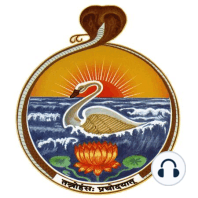54 min listen

5 – Real Meaning of Citta Vritti Nirodha | Patanjali Yoga Sutras | Swami Tattwamayananda
5 – Real Meaning of Citta Vritti Nirodha | Patanjali Yoga Sutras | Swami Tattwamayananda
ratings:
Length:
63 minutes
Released:
Feb 16, 2019
Format:
Podcast episode
Description
Lecture by Swami Tattwamayananda. After a brief review of the 5 types of subtle mental tendencies, Vrittis, repeated practice, Abhyasa, is explained. Along with that, Vairagya, dispassion and the dimensions of practice are explained. Then, the common misconception that Citta Vritti Nirodha refers to a complete cessation of all thought is corrected. The real meaning of Citta Vritti Nirodha is complete freedom from all obsessive mental tendencies, Vrittis, and therefore a transcendence of the slavery to the mind and senses. Verses: I.2, I.12, I.13, I.14
Released:
Feb 16, 2019
Format:
Podcast episode
Titles in the series (100)
1 - Befriending the Mind | Patanjali Yoga Sutras | Swami Tattwamayananda by Yoga Sutras and the World of the Human Mind